Framework for Efficient Auto-Scaling of Virtual Network Functions in a Cloud Environment
Abstract
1. Introduction
- We present a comprehensive integrating framework with an efficient metering component in the cloud to store and process metrics for efficient auto-scaling of VNF.
- We examine the proposed framework by implementing VNF in a fully functional cloud by integrating several OpenStack components with Gnocchi, creating Gnocchi archive policies, creating Virtualized Infrastructure Manager (VIM), and defining VNF Descriptor (VNFD).
- By conducting extensive experiments, we verify the efficacy of our proposed framework with respect to the following parameters: (a) predicting the database size of Gnocchi versus Ceilometer for storage of metrics, (b) using timestamp delay, measuring the time it takes to extract monitoring data from the database, (c) comparing memory consumption of Gnocchi versus Ceilometer, and (d) triggering alarms to test the efficacy of our framework for efficient auto-scaling.
2. Literature Review
2.1. Auto-Scaling Using Heat v1.0
2.2. Auto-Scaling Using Heat and Ceilometer
- Large storage footprint
- Data intake optimization
- Query API performance issues
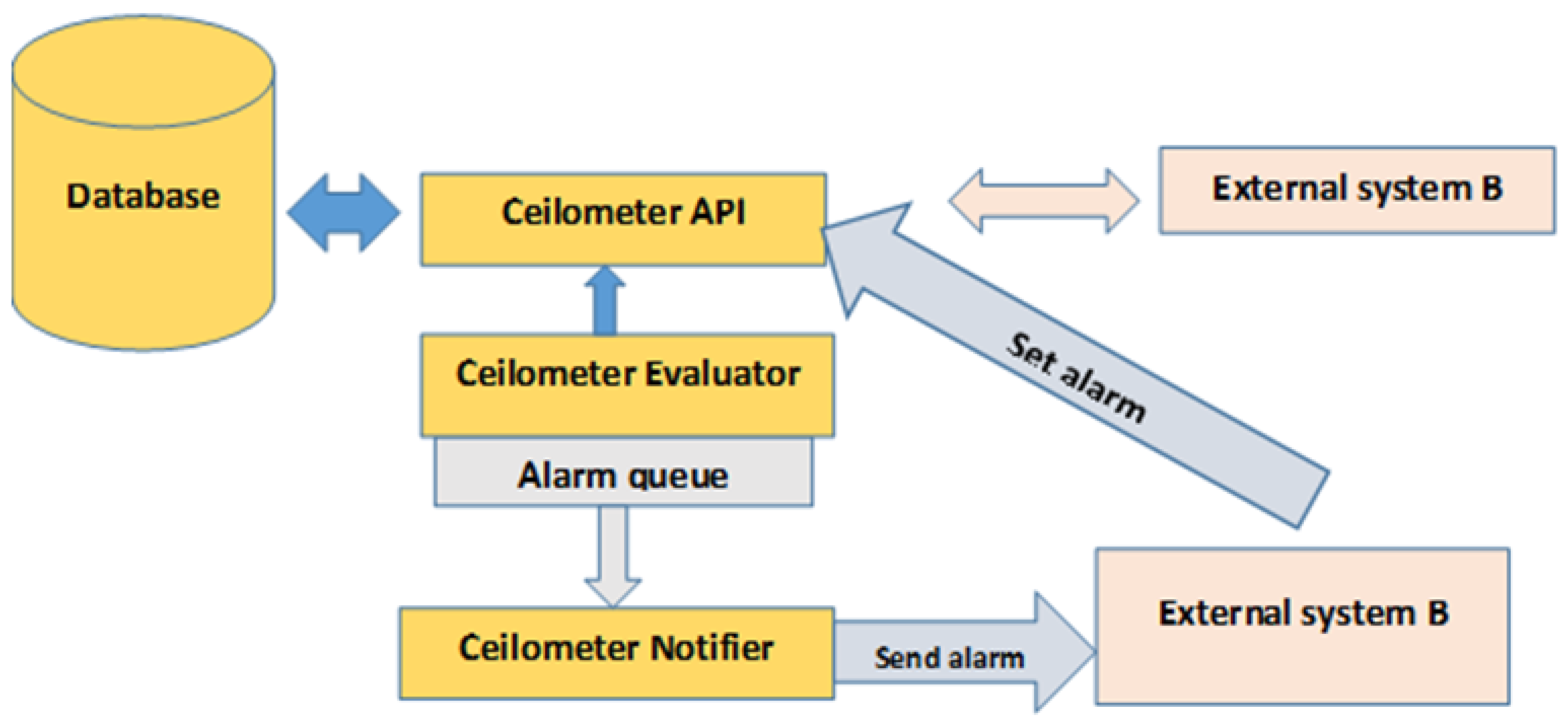
2.3. Auto-Scaling Using Heat and Monasca
3. Deployment of VNF in a Cloud Environment
3.1. Proposed Framework
3.2. Gnocchi
3.3. Creating Gnocchi Archive Policies
3.4. Creating Virtualized Infrastructure Manager
3.5. Defining VNF Descriptor
3.6. Testing VNF Deployment
3.7. Verifying Aodh Alarms Creation
3.8. Resulting Network Topology
4. Performance Evaluations
4.1. Aggregated Data Points
4.2. Database Size per Metric
4.3. Predicted Database Size of Ceilometer versus Gnocchi
4.4. Timestamp Delay
4.5. Timestamp Delay with Four Processing Workers
4.6. Memory Consumption
4.7. Triggering Auto-Scaling of VNF
4.7.1. Scale-Out of VNF
4.7.2. Scale-in of VNF
5. Conclusions and Future Work
Author Contributions
Funding
Institutional Review Board Statement
Informed Consent Statement
Data Availability Statement
Conflicts of Interest
Abbreviations
| API | Application Programming Interface |
| CLI | Command Line Interface |
| CPU | Central Processing Unit |
| GUI | Graphic User Interface |
| IT | Information Technology |
| NFV | Network Function Virtualization |
| NFVI | NFV Infrastructure |
| NFVO | NFV Orchestrator |
| QoS | Quality of Service |
| RPC | Remote Procedure Call |
| SDN | Software Defined Networking |
| URL | Uniform Resource Locator |
| UTC | Universal Time Coordinated |
| VDU | Virtual Deployment Unit |
| VIM | Virtualized Infrastructure Manager |
| VM | Virtual Machine |
| VNF | Virtual Network Function |
| VNFD | VNF Descriptor |
| VNFM | VNF Manager |
References
- Chiosi, M.; Clarke, D.; Willis, P.; Reid, A.; Feger, J.; Bugenhagen, M.; Khan, W.; Fargano, M.; Cui, C.; Deng, H.; et al. Network Functions Virtualization—Introductory White Paper, SDN and OpenFlow World Congress, Darmstadt, Germany, 22–24 October 2012. Available online: https://portal.etsi.org/NFV/NFV_White_Paper.pdf (accessed on 20 August 2021).
- Inter Corporation. Enabling NFV to Deliver on Its Promise, Solution Brief Packet Processing on Intel® Architecture. 2015. Available online: https://www.intel.com/content/dam/www/public/us/en/documents/solution-briefs/nfv-packet-processing-brief.pdf (accessed on 20 August 2021).
- Open Platform for NFV (OPNFV). 2016. Available online: https://www.opnfv.org/about (accessed on 20 August 2021).
- ETSI GS NFV-MAN 001 V1.1.1.; Network Function Virtualisation (NFV); Management and Orchestration. ETSI: Sophia Antipolis, France, 2014. Available online: https://www.etsi.org/deliver/etsi_gs/NFV-MAN/001_099/001/01.01.01_60/gs_NFV-MAN001v010101p.pdf (accessed on 30 September 2021).
- ETSI GS NFV 002 V1.2.1. ; Network Functions Virtualisation (NFV); Architectural Framework. ETSI: Sophia Antipolis, France, 2014. Available online: https://www.etsi.org/deliver/etsi_gs/NFV/001_099/002/01.02.01_60/gs_NFV002v010201p.pdf (accessed on 30 September 2021).
- Mijumbi, R.; Serrat, J.; Gorricho, J.; Bouten, N.; de Turck, F.; Boutaba, R. Network function virtualization: State-of-the-art and research challenges. IEEE Commun. Surveys Tuts. 2016, 18, 236–262. [Google Scholar] [CrossRef]
- Varghese, B.; Buyya, R. Next generation cloud computing: New trends and research directions. Future Gener Comp. Syst. 2018, 79, 849–861. [Google Scholar] [CrossRef]
- Subramanian, K. Survey Reveals Cloud Computing Benefits and Challenges. Datamation, 8 May 2019. Available online: https://www.datamation.com/cloud-computing/survey-reveals-cloud-computing-benefits-and-challenges.html (accessed on 2 October 2021).
- Anwar, A.; Sailer, A.; Kochut, A.; Butt, A.R. Anatomy of Cloud Monitoring and Metering: A case study and open problems. In Proceedings of the 6th Asia-Pacific Workshop on Systems (APSys ‘15), Tokyo, Japan, 27–28 July 2015. [Google Scholar]
- Al-Dhuraibi, Y.; Paraiso, F.; Djarallah, N.; Merle, P. Elasticity in Cloud Computing: State of the Art and Research Challenges. IEEE Trans. Serv. Comput. 2018, 11, 430–447. [Google Scholar] [CrossRef]
- Mehmood, A.; Muhammad, A.; Khan, T.A.; Rivera, J.J.D.; Iqbal, J.; Islam, I.U.; Song, W.C. Energy-efficient auto-scaling of virtualized network function instances based on resource execution pattern. Comput. Electr. Eng. 2020, 88, 1–15. [Google Scholar] [CrossRef]
- Woo, S.; Sherry, J.; Han, S.; Moon, S.; Ratnasamy, S.; Shenker, S. Elastic scaling of stateful network functions. In Proceedings of the 15th USENIX Symp Networked Systems Design and Implementation (NSDI), Renton, WA, USA, 9–11 April 2018; pp. 299–312. [Google Scholar]
- Sun, C.; Bi, J.; Meng, Z.; Yang, T.; Zhang, X.; Hu, H. Enabling NFV Elasticity Control with Optimized Flow Migration. IEEE J. Sel. Areas Commun. 2018, 10, 2288–2303. [Google Scholar] [CrossRef]
- Gnocchi. 2018. Available online: https://gnocchi.xyz/gnocchiclient/shell.html (accessed on 2 October 2021).
- Openstack. Available online: https://docs.openstack.org/heat/latest/ (accessed on 2 October 2021).
- Dake, S. Heat API: OpenStack AWS CloudFormation Orchestration. Available online: https://github.com/sdake/slides/blob/master/sdake-cloudopen-heat-2012-08/heat-cloudopen-final.pdf (accessed on 30 November 2021).
- Using Heat for Autoscaling. 2016. Available online: https://ibm-blue-box-help.github.io/help-documentation/heat/autoscaling-with-heat/ (accessed on 30 November 2021).
- VNF Scaling Operations with Heat. 2019. Available online: https://www.cloudqubes.com/hands-on/openstack/heat/vnf-scaling-operations-with-heat/ (accessed on 30 November 2021).
- Autoscaling with Heat. 2019. Available online: https://docs.openstack.org/senlin/latest/scenarios/autoscaling_heat.html (accessed on 30 November 2021).
- Auto-Scaling Your Apps with OpenStack Heat—An Orchestration Tool Comparison Pt I of II. 2015. Available online: https://cloudify.co/blog/openstack-summit-vancouver-cloud-network-orchestration-automation-heat-scaling/ (accessed on 30 November 2021).
- Kaur, K.; Mangat, V.; Saluja, K.K. A Study of OpenStack Networking and Auto-Scaling Using Heat Orchestration Template. In Intelligent Computing and Communication Systems; Springer: Berlin/Heidelberg, Germany, 2021; pp. 169–176. [Google Scholar]
- Gupta, P.R.; Taneja, S.; Datt, A. Using Heat and Ceilometer for providing autoscaling in OpenStack. Int. J. Inf. Commun. Technol. 2014, 2, 84–89. [Google Scholar]
- Yang, I.; Tung, D.V.; Kim, M.; Kim, Y. Alarm-based monitoring for a high availability in service function chain. In Proceedings of the 2016 International Conference on Cloud Computing, Research and Innovations (ICCCRI), Singapore, 4–5 May 2016; pp. 86–91. [Google Scholar]
- OpenStack. Available online: https://docs.openstack.org/ceilometer/mitaka/architecture.html (accessed on 30 November 2021).
- Abaakouk, M. Autoscaling with Heat and Ceilometer, Articles about OpenStack and Related Technologies from the RDO Community. 2013. Available online: https://blogs.rdoproject.org/2013/08/autoscaling-with-heat-and-ceilometer/ (accessed on 30 November 2021).
- Gomez-Rodriguez, M.A.; Sosa-Sosa, V.J.; Gonzalez-Compean, J.L. Assessment of Private Cloud Infrastructure Monitoring Tools, A Comparison of Ceilometer and Monasca. In Proceedings of the 6th International Conference on Data Science, Technology and Applications (DATA2017), Madrid, Spain, 24–26 July 2017; pp. 371–381. [Google Scholar]
- Heat-Monasca-Auto-Scaling. Available online: https://wiki.openstack.org/wiki/Heat-Monasca-Auto-Scaling (accessed on 30 December 2021).
- Lanciano, G.; Galli, F.; Cucinotta, T.; Bacciu, D.; Passarella, A. Predictive auto-scaling with OpenStack Monasca. In Proceedings of the 14th IEEE/ACM International Conference on Utility and Cloud Computing, UCC ’21, Liecester, UK, 6–9 December 2021; pp. 1–10. [Google Scholar]
- Llorens-Carrodeguas, A.L.; Leyva-Pupo, I.; Cervello-Pastor, C.; Pineiro, L. An SDN-based solution for horizontal auto-scaling and load balancing of transparent VNF clusters. Sensors 2021, 21, 8283. [Google Scholar] [CrossRef]
- Rahman, S.; Ahmed, T.; Huynh, M.; Tornatore, M.; Mukherjee, B. Auto-scaling VNFs using Machine Learning to Improve QoS and Reduce Cost. In Proceedings of the 2018 IEEE International Conference on Communications (ICC 2018), Kansas City, MO, USA, 20–24 May 2018; pp. 1–6. [Google Scholar]
- Arabnejad, H.; Pahl, C.; Jamshidi, P.; Estrada, G. A Comparison of Reinforcement Learning Techniques for Fuzzy Cloud Auto-Scaling. In Proceedings of the 2017 17th IEEE/ACM International Symposium on Cluster, Cloud and Grid Computing (CCGRID), Madrid, Spain, 14–17 May 2017; pp. 64–73. [Google Scholar]
- Soto, P.; Vleechauwer, D.D.; Camelo, M.; Bock, Y.D.; Schepper, K.D.; Chang, C.Y.; Hellinckx, P.; Botero, J.F.; Latre, S. Towards autonomous VNF auto-scaling using deep reinforcement learning. In Proceedings of the 2021 Eighth International Conference on Software Defined Systems (SDS), Gandia, Spain, 6–9 December 2021; pp. 1–8. [Google Scholar]
- Subramanya, T.; Riggio, R. Centralized and federated learning for predictive VNF autoscaling in multi-domain 5G networks and beyond. IEEE Trans. Netw. Serv. Manag. 2021, 18, 63–78. [Google Scholar] [CrossRef]
- OpenStack. 2018. Available online: https://www.openstack.org/software/rocky/ (accessed on 2 December 2021).
- OpenStack Tacker. 2015. Available online: https://wiki.openstack.org/wiki/Tacker (accessed on 4 June 2022).
- Tacker. 2016. Available online: http://docs.openstack.org/developer/tacker/ (accessed on 4 June 2022).
- Belova, D. OpenStack Ceilometer, Cloud Performance, and Hardware Requirements. Mirantis. November 2014. Available online: https://www.mirantis.com/blog/openstack-ceilometer-cloud-performance-hardware-requirements/ (accessed on 2 February 2022).

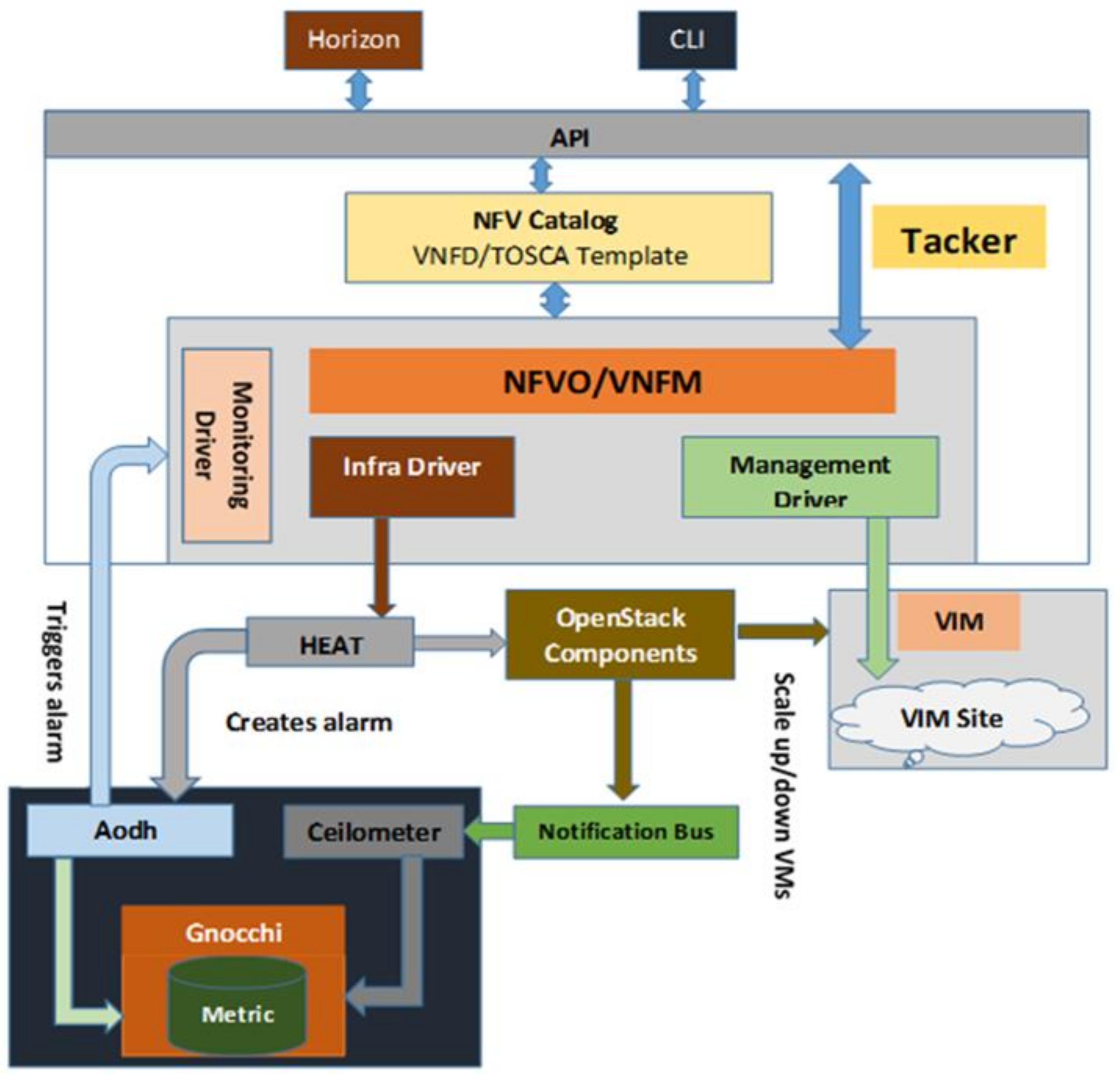
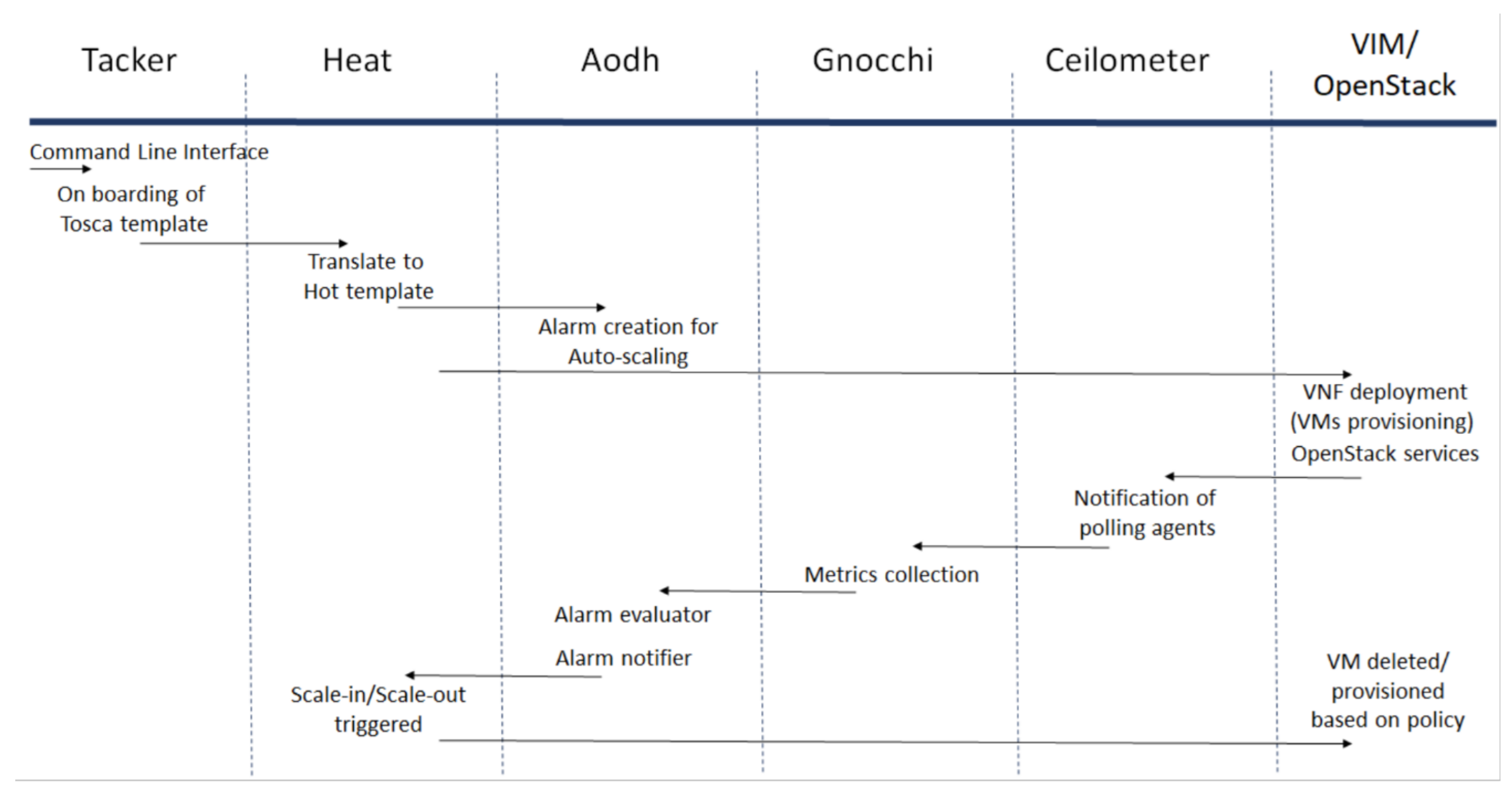
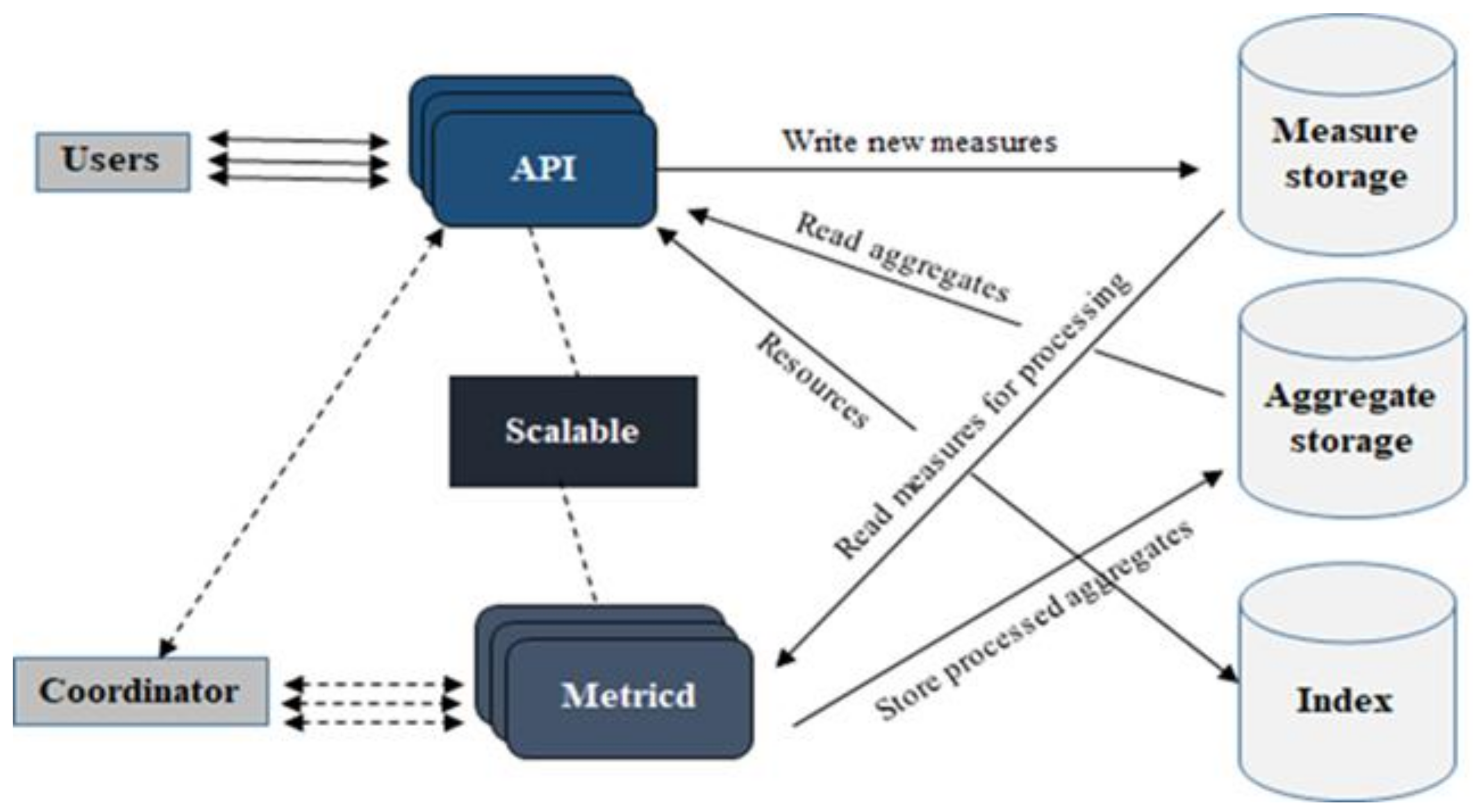

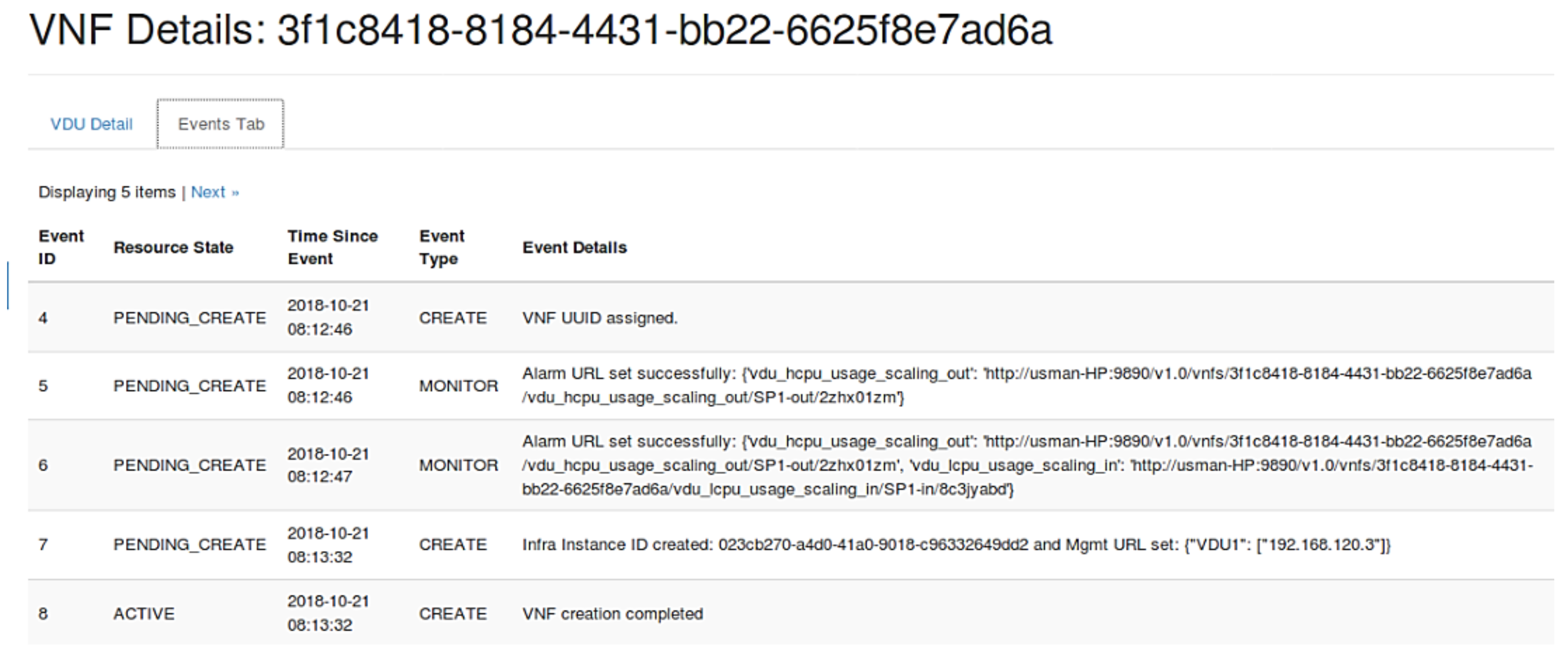
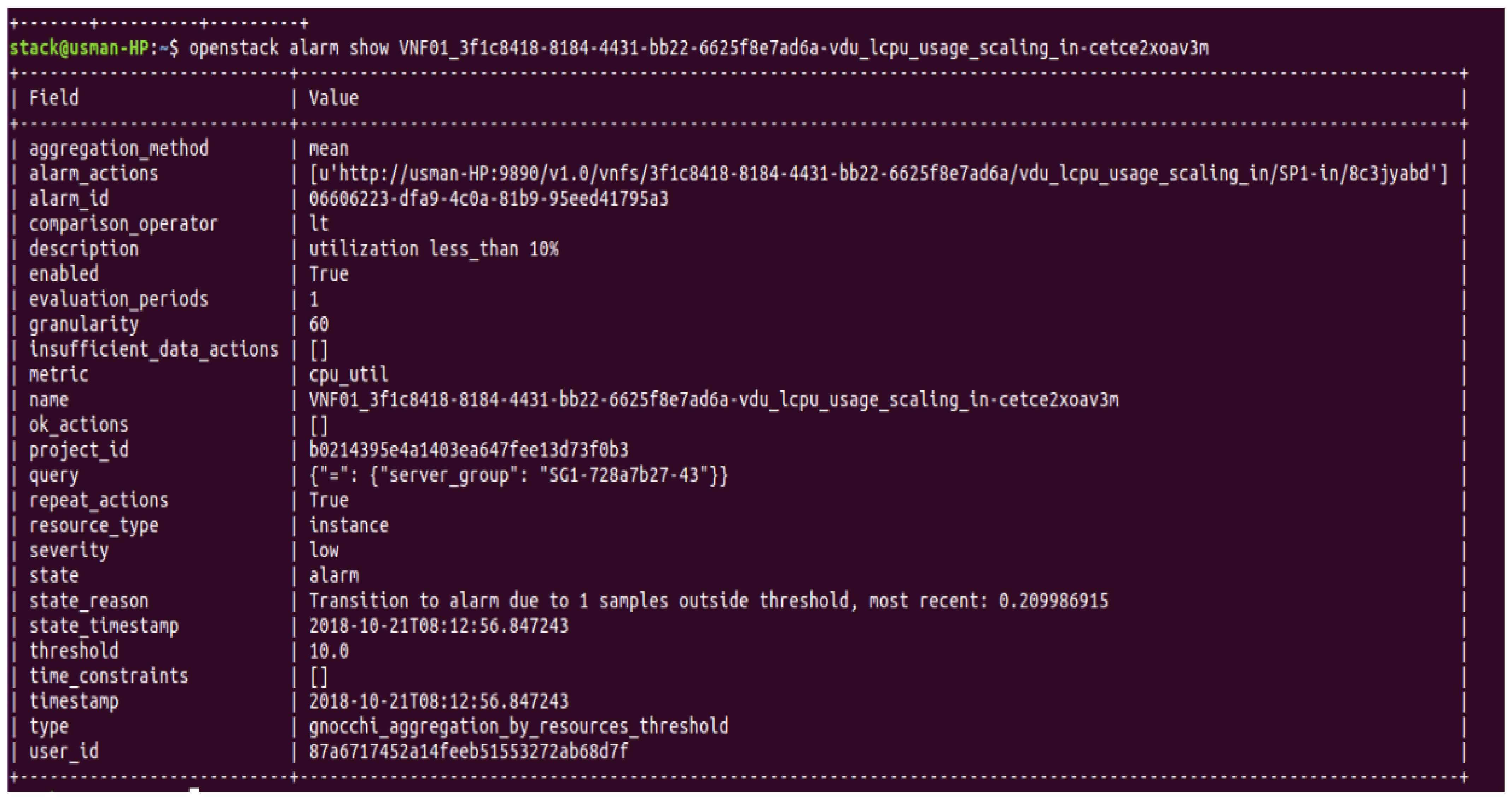
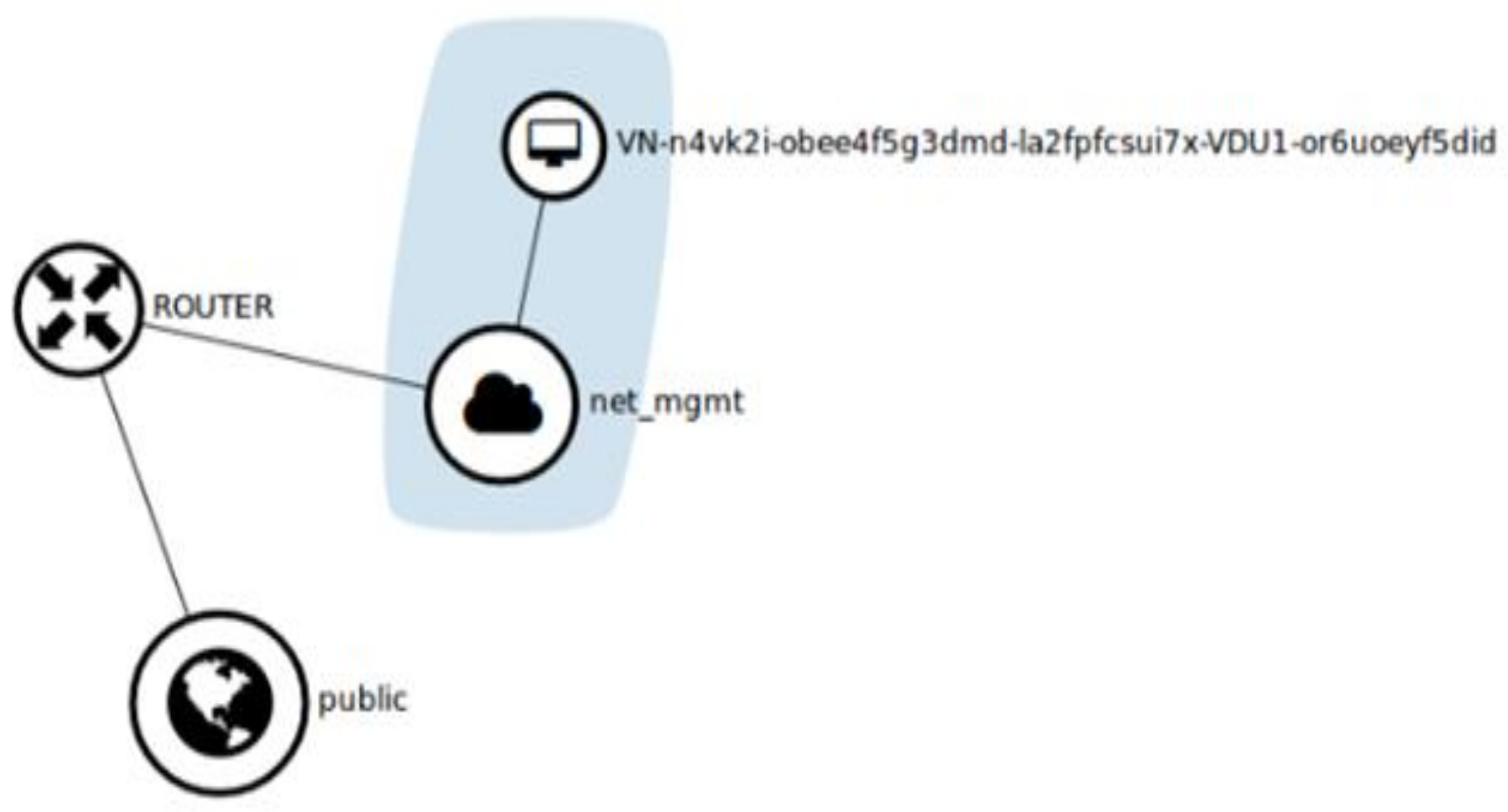
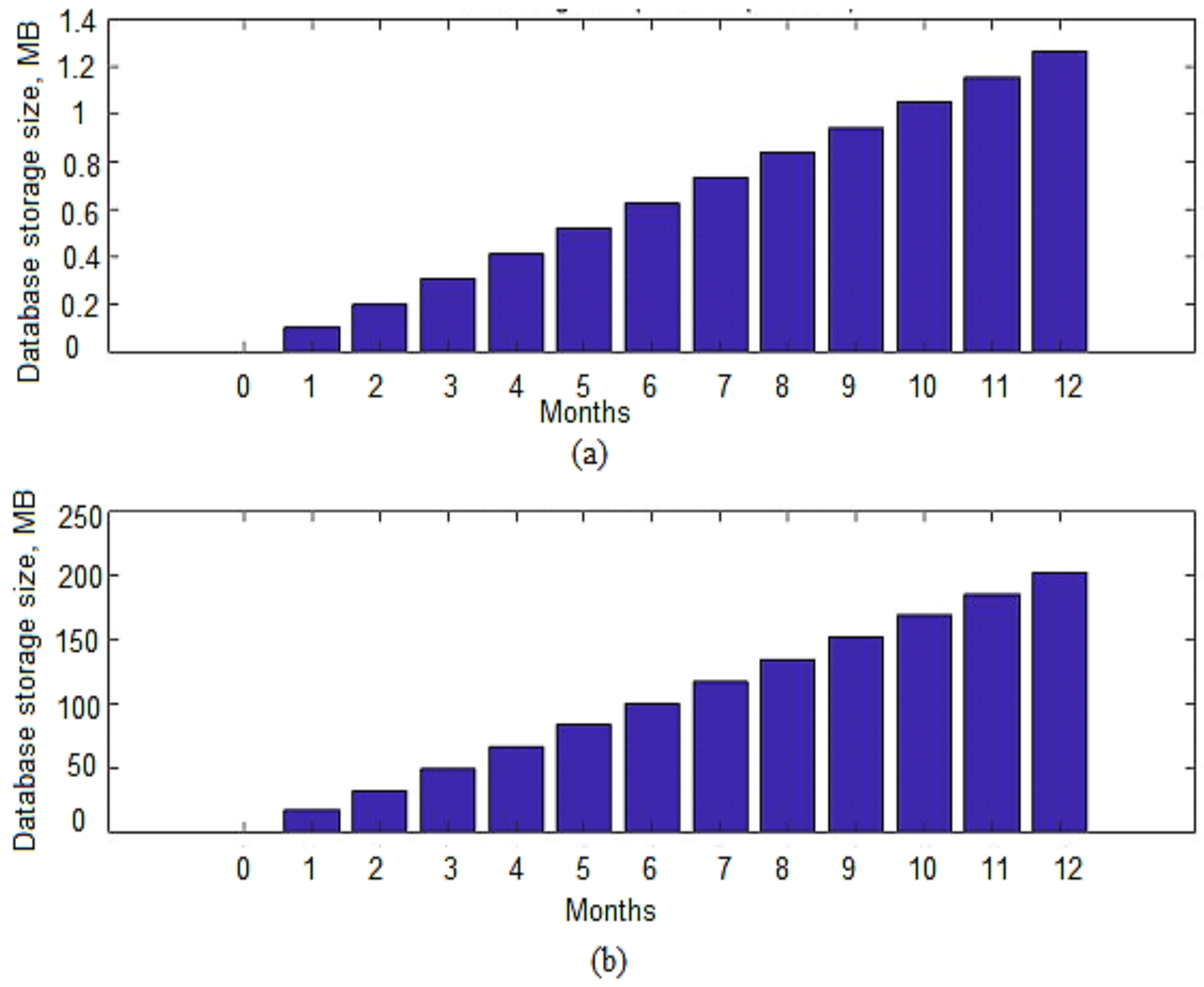
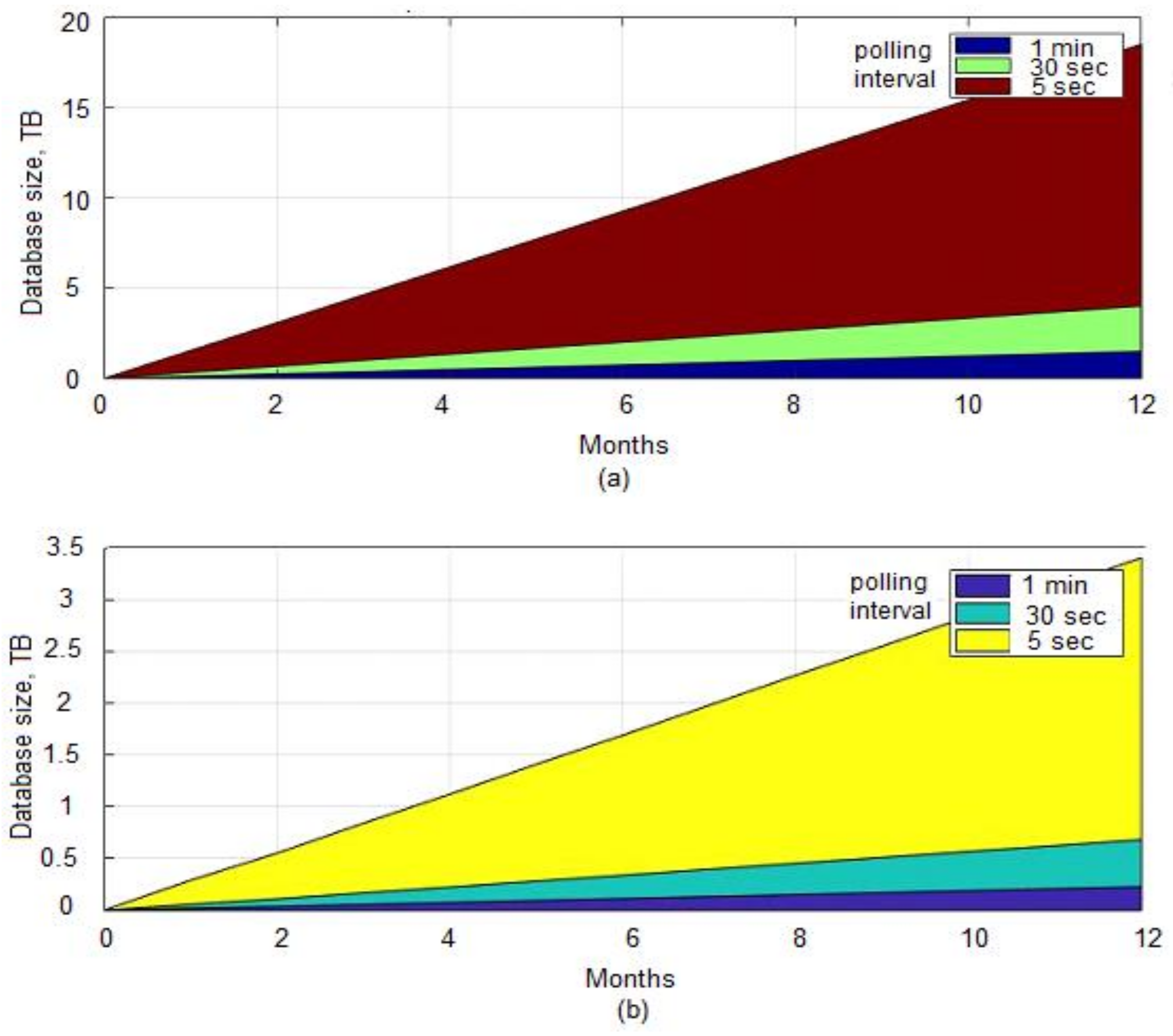
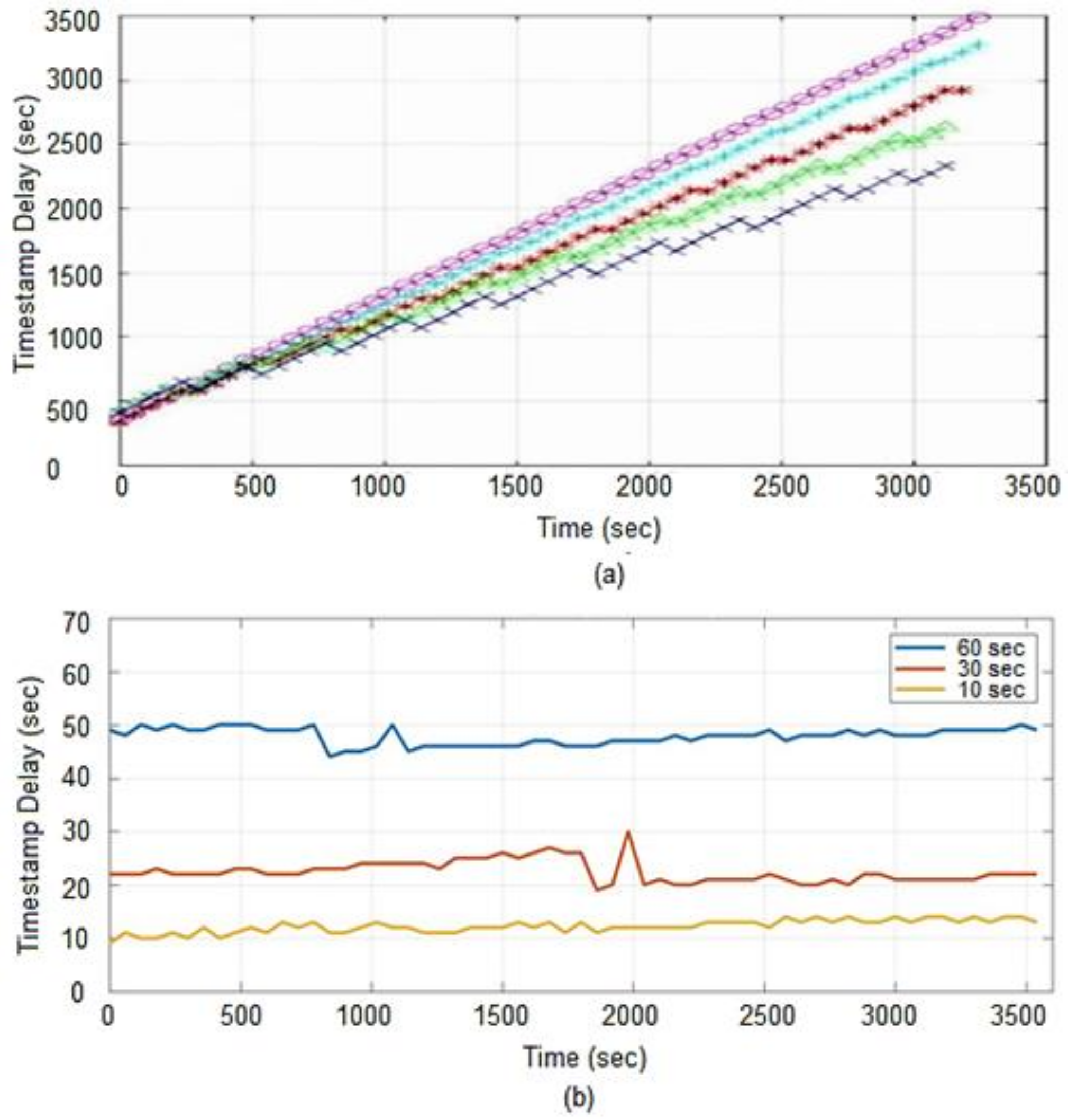
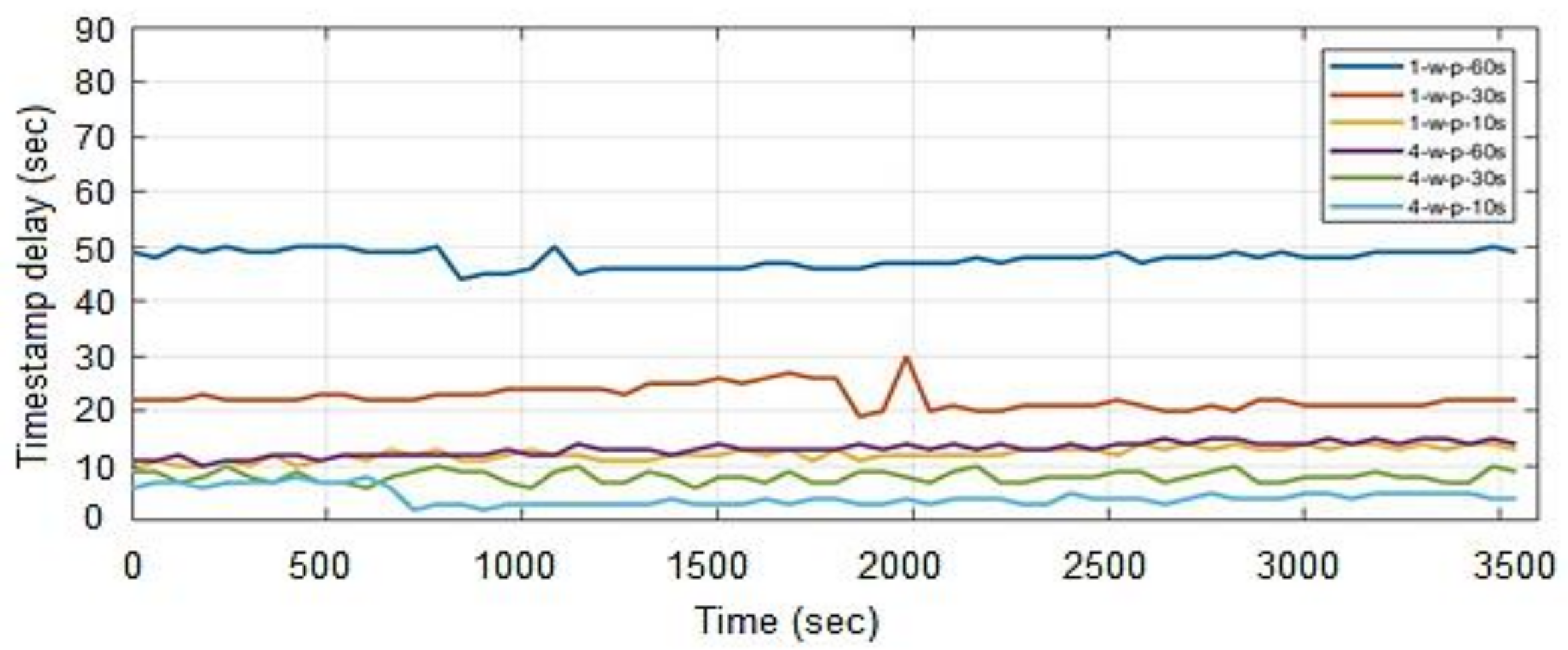
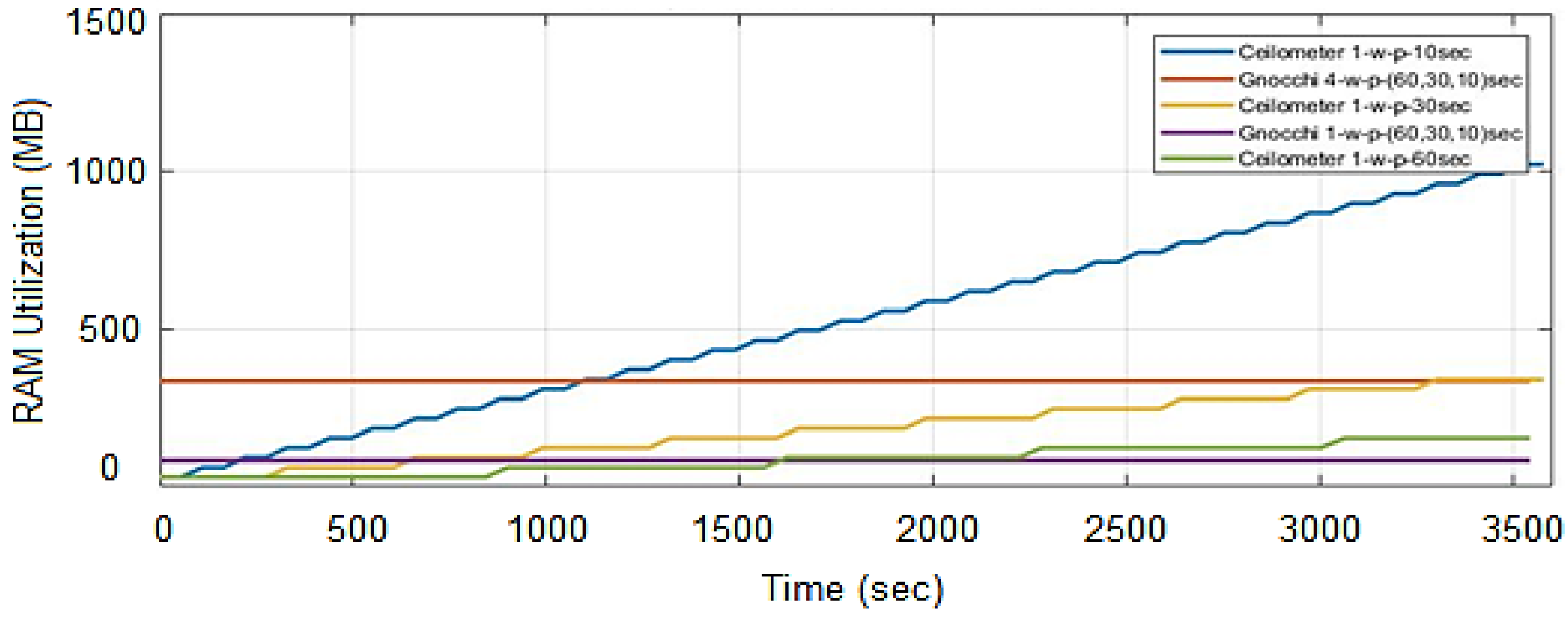
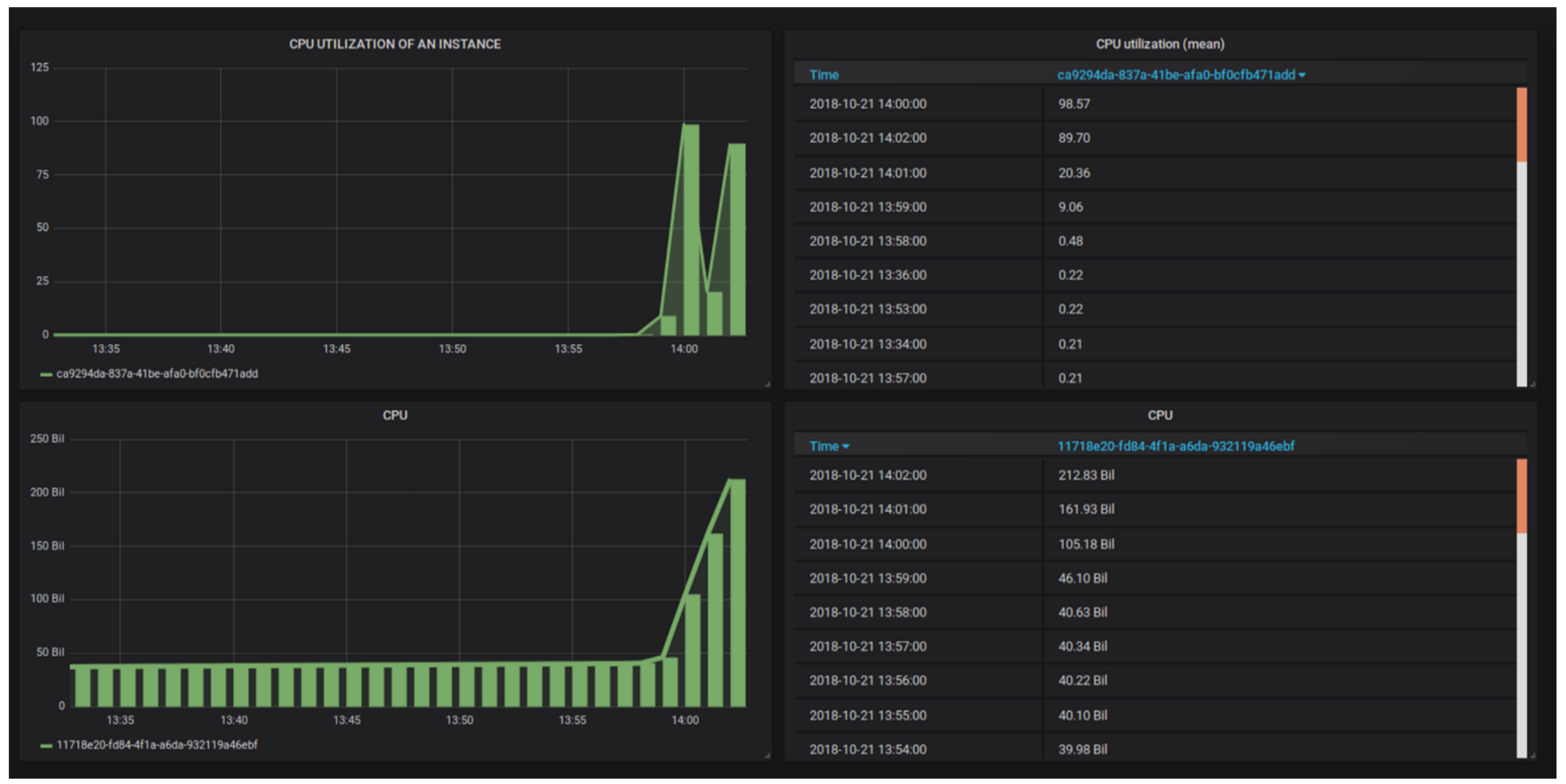
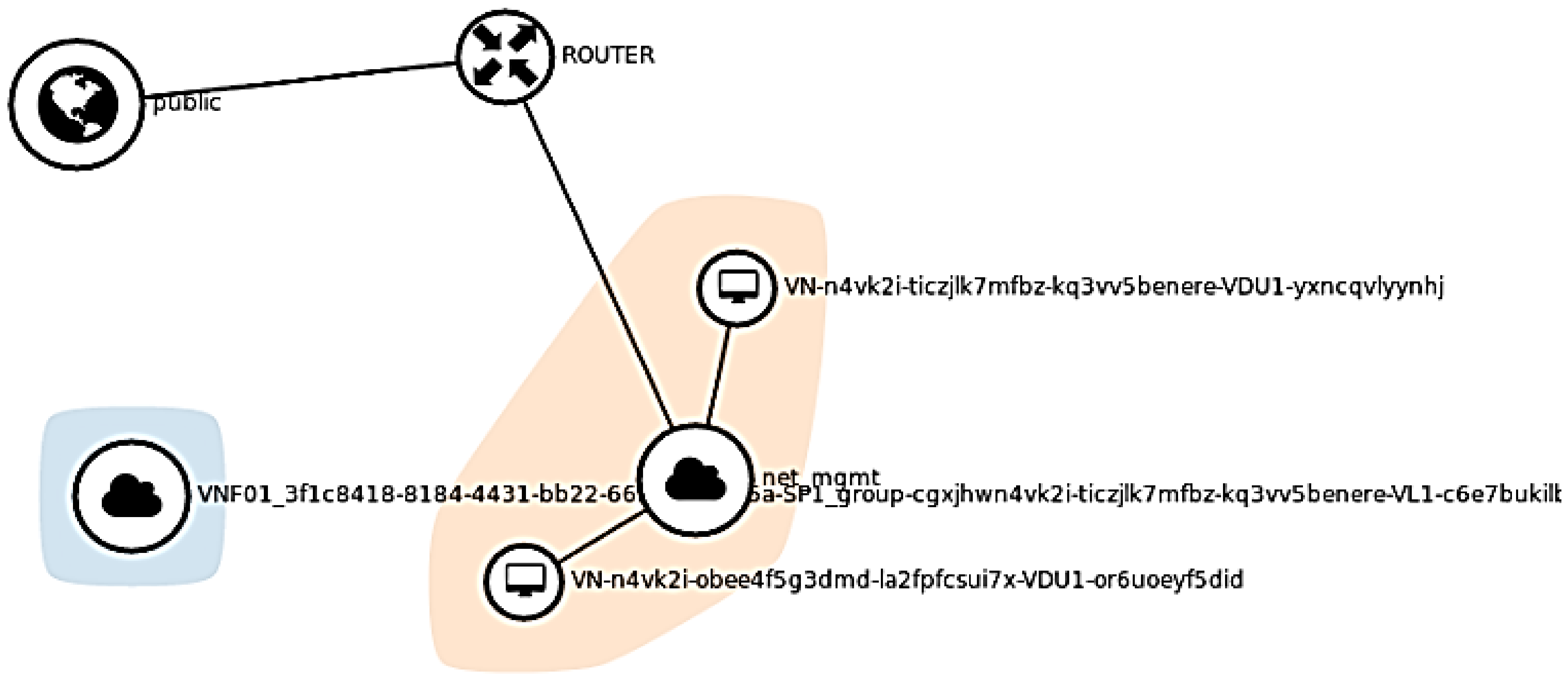
| Entity | Condition | Version |
|---|---|---|
| Physical server | Processor: IntelI CITM) i5-230M CPU@2.60 GHz RAM: 12 GB Disk space: 256 GB | |
| OpenStack | Stable | Rocky |
| Tracker | Stable | Rocky |
| Operating system | OS Type: 64 bit | Ubuntu 16. |
| Policy Name | Granularity (Gnocchi) | Polling Interval (Ceilometer) |
|---|---|---|
| Medium | 60 s | 60 s |
| Delay_30 | 30 s | 30 s |
| Delay_10 | 10 s | 10 s |
| Parameter/Policy | Definition | Value |
|---|---|---|
| disk_size | Disk size of virtual machine | 1 GB |
| mem_size | RAM dedicated to VM | 512 MB |
| num_cpus_ | Number of CPUs per VM | 1 |
| Image | Linux image to boot VM | cirros-0.4.0-x86_64-disk |
| Metric | store VM CPU utilization values | cpu_util |
| threshold: | Alarm thresholds | 10, 60 |
| aggregation_method | Function applied on collected points | mean |
| comparison_operator | Greater than, less than, operators | gt, lt |
| min_instances | Minimum VM to spin | 1 |
| max_instances | Maximum VM to be used | 2 |
Publisher’s Note: MDPI stays neutral with regard to jurisdictional claims in published maps and institutional affiliations. |
© 2022 by the authors. Licensee MDPI, Basel, Switzerland. This article is an open access article distributed under the terms and conditions of the Creative Commons Attribution (CC BY) license (https://creativecommons.org/licenses/by/4.0/).
Share and Cite
Zafar, S.; Ayub, U.; Alkhammash, H.I.; Ullah, N. Framework for Efficient Auto-Scaling of Virtual Network Functions in a Cloud Environment. Sensors 2022, 22, 7597. https://doi.org/10.3390/s22197597
Zafar S, Ayub U, Alkhammash HI, Ullah N. Framework for Efficient Auto-Scaling of Virtual Network Functions in a Cloud Environment. Sensors. 2022; 22(19):7597. https://doi.org/10.3390/s22197597
Chicago/Turabian StyleZafar, Saima, Usman Ayub, Hend I. Alkhammash, and Nasim Ullah. 2022. "Framework for Efficient Auto-Scaling of Virtual Network Functions in a Cloud Environment" Sensors 22, no. 19: 7597. https://doi.org/10.3390/s22197597
APA StyleZafar, S., Ayub, U., Alkhammash, H. I., & Ullah, N. (2022). Framework for Efficient Auto-Scaling of Virtual Network Functions in a Cloud Environment. Sensors, 22(19), 7597. https://doi.org/10.3390/s22197597






